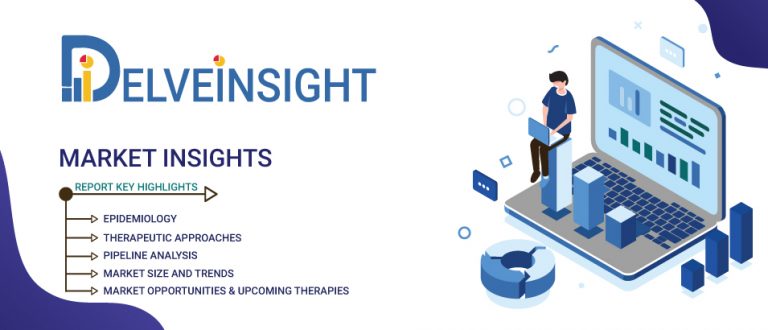Atypical Hemolytic Uremic Syndrome Market Insights, Epidemiology Segmentation, and Market Report Scope
DelveInsight’s Atypical Hemolytic Uremic Syndrome Market Insights report provides a thorough understanding of current treatment practices, emerging drugs, Atypical Hemolytic Uremic Syndrome market share of the individual therapies, current and forecasted Atypical Hemolytic Uremic Syndrome market size from 2019 to 2032 segmented into 7MM (the USA, EU5 (the UK, Italy, Spain, France, and Germany), and Japan).
Atypical Hemolytic Uremic Syndrome Overview
Atypical hemolytic uremic syndrome (aHUS) is a chronic, ultra-rare disease characterized by thrombotic microangiopathy (TMA), the formation of blood clots in small blood vessels throughout the body, causing a reduction in platelet count and life-threatening damage to the kidney, brain, heart and other vital organs.
Download Sample Report @ Atypical Hemolytic Uremic Syndrome Market
Some of the key features of the Atypical Hemolytic Uremic Syndrome Market Report
- Genetic or acquired dysregulation of the complement alternative pathway is detected in 40–60% of patients with aHUS suggesting a genetic predisposition. Among the patient pool with genetic onset of the disease, CFH is the common gene with mutation in 21-22% of the patients followed by CFHR3, MCP, C3, CFB and CFI in 26%, 15%, 2-8%,1-4% and 4-8% patients respectively.
- The prognosis of aHUS can be poor in many cases, therefore, a timely and accurate diagnosis—in addition to appropriate treatment—is critical to improving patient outcomes.
- The clinical presentation and management of aHUS is the same whether the disease is genetic, acquired or caused by an unknown mechanism.
- Atypical Hemolytic Uremic Syndrome companies such as Alexion Pharmaceuticals, Omeros Corporation, Novartis Pharmaceuticals, Hoffmann-La Roche, Chugai Pharmaceutical, and several others.
- Atypical Hemolytic Uremic Syndrome therapies such as Soliris (eculizumab), Ultomiris (ravulizumab-cwvz), Narsoplimab, Nomacopan, and several others.
Atypical Hemolytic Uremic Syndrome Symptoms
The signs and symptoms of aHUS result from the formation of tiny blood clots (microthrombi) in various small blood vessels of the body. These clots reduce or prevent proper blood flow to various organs of the body, especially the kidneys. Thus, aHUS is a complex disorder and multiple factors, including certain genetic, environmental and immunologic factors, all play a role in its development.
Atypical Hemolytic Uremic Syndrome Causes
Most cases of aHUS are genetic, although some may be acquired due to autoantibodies or occur for unknown reasons (idiopathic). Therefore, aHUS is a progressive disease caused by life-long uncontrolled activation of the complement system due to deficiencies in complement regulatory genes. With genetic deficiency of naturally occurring complement inhibitors, patients experience chronic uncontrolled activation of the complement system, causing ongoing inflammation and blood clots in vital organs. In patients with aHUS, uncontrolled complement activation results in an ongoing risk of sudden and catastrophic life-threatening complications. The genes associated with genetic aHUS include C3, CD46
(MCP), CFB, CFH, CFHR1, CFHR3, CFHR4, CFI, DGKE, and THBD. About 30% of the time, aHUS is associated with malfunctions in the gene (CFH) responsible for the production of a blood protein known as factor H. This is the most common gene mutation associated with aHUS.
Atypical Hemolytic Uremic Syndrome Treatment
Clinically, the three main findings of aHUS are hemolytic anemia, thrombocytopenia, and acute kidney failure. Initial diagnosis of aHUS is made by microangiopathic hemolytic anemia (Hb < 10 g/dL, negative direct Coombs test, elevated LDH, decreased haptoglobin, and the presence of schistocytes), thrombocytopenia (platelet count
Get an overview of the report @ Atypical Hemolytic Uremic Syndrome Market Report
Atypical Hemolytic Uremic Syndrome Epidemiology Segmentation
- Total Prevalent cases
- Gender-specific prevalent Cases
- Age-specific prevalent cases
- Type-specific prevalent cases
- Diagnosed and Treatable cases
Atypical Hemolytic Uremic Syndrome Market Insights
aHUS has a grave prognosis. Although approximately 25% of patients succumb to their illness during the acute phase, nearly half develop end-stage renal disease within a year. Moreover, patients are also plagued by a high recurrence rate after renal transplantation which often leadsto graft loss. Plasma therapy is considered the standard treatment for aHUS. Considering the role of complement activation in the pathogenesis of aHUS, therapeutic strategies to suppress complement activity namely Soliris and Ultomiris are prescribed. Finally, renal and liver transplantation is undertaken in patients with advanced and irreversible organ damage.
Atypical Hemolytic Uremic Syndrome Emerging Therapy Assessment
aHUS has a dry pipeline with few emerging key players in late-phase of clinical development. The potential key players which are expected to enter the aHUS market in the coming years, include Akari Therapeutics and Omeros Corporation. These therapies have been described below and their launch is expected during the forecast period of 2021–2030.
Download Sample Report @ Atypical Hemolytic Uremic Syndrome Market Insights
Table of Content
1. Key Insights
2. Executive Summary of Atypical Hemolytic Uremic Syndrome (aHUS)
3. Competitive Intelligence Analysis for Atypical Hemolytic Uremic Syndrome (aHUS)
4. Atypical Hemolytic Uremic Syndrome (aHUS): Market Overview at a Glance
5. Atypical Hemolytic Uremic Syndrome (aHUS): Disease Background and Overview
6. Patient Journey
7. Atypical Hemolytic Uremic Syndrome (aHUS) Epidemiology and Patient Population
8. Treatment Algorithm, Current Treatment, and Medical Practices
9. Atypical Hemolytic Uremic Syndrome (aHUS) Unmet Needs
10. Key Endpoints of Atypical Hemolytic Uremic Syndrome (aHUS) Treatment
11. Atypical Hemolytic Uremic Syndrome (aHUS) Marketed Products
12. Atypical Hemolytic Uremic Syndrome (aHUS) Emerging Therapies
13. Atypical Hemolytic Uremic Syndrome (aHUS): Seven Major Market Analysis
14. Attribute analysis
15. 7MM: Market Outlook
16. Access and Reimbursement Overview of Atypical Hemolytic Uremic Syndrome (aHUS)
17. KOL Views
18. Market Drivers
19. Market Barriers
20. Appendix
21. DelveInsight Capabilities
22. Disclaimer
23. About DelveInsight
About Us
DelveInsight is a Business Consulting and Market research company, providing expert business solutions for life science vertical and offering quintessential advisory services in the areas of R&D, Strategy Formulation, Operations, Competitive Intelligence, Competitive Landscaping, and Mergers & Acquisitions.
Contact Us
Yash
Media Contact
Company Name: DelveInsight Business Research LLP
Contact Person: Yash Bhardwaj
Email: Send Email
Phone: 9193216187
Address:304 S. Jones Blvd #2432
City: Las Vegas
State: NV
Country: United States
Website: https://www.delveinsight.com/



